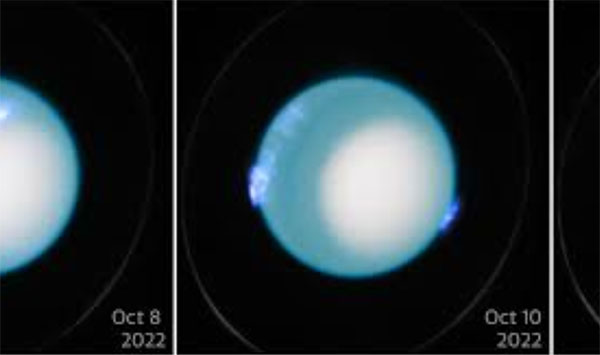
Observations using the Hubble Space Telescope have shown that Uranus takes 17 hours, 14 minutes and 52 seconds to complete one rotation, scientists report. That’s 28 seconds longer than the length of a Uranian day estimated by NASA’s Voyager 2 spacecraft in 1980.
A team of researchers led by a French scientist made the observation after decades of studying auroras in Uranus’ atmosphere, keeping an eye on its magnetic poles. Uranus, the seventh planet in the solar system, takes 84 Earth years to complete one orbit around the sun.
“The Hubble observations played a very important role,” says Laurent Lamy of the Paris Observatory, the study’s lead author. Lamy and his international research colleagues show that studying the behavior of a planet’s auroras and magnetosphere can reveal precise information about its rotation.
The study was published in the journal Nature Astronomy on Tuesday, marking the 35th anniversary of the Hubble Space Telescope’s launch on the 24th.



